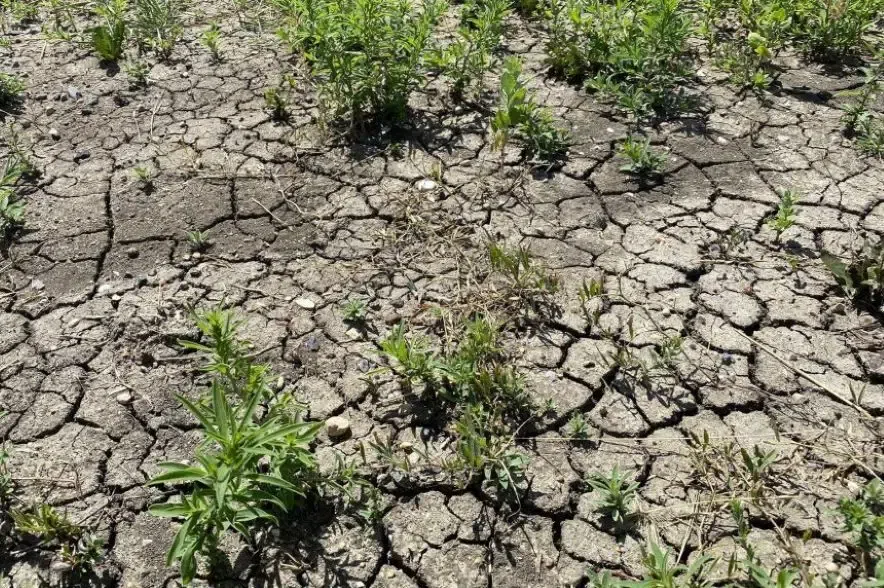It’s looking like it could be another dry year for farmers.
In its most recent report, the Water Security Agency said drought-like conditions could be prevalent again this year, and that many different areas could potentially face water shortages.
According to the report, warm temperatures in the middle of March led to snowmelt runoff beginning early or, in some cases, being completed.
The agency had previously reported that 33 out of 45 water-supply reservoirs across the province were at or were expected to be at full capacity by the time the runoff is complete.
Six reservoirs are currently expected to be 70 to 90 per cent full, while the Harris, Junction, McDougald, Downie Highfield, and Roughbark reservoirs are expected to remain low.
Ian Boxall is the president of the Agricultural Producers Association of Saskatchewan. He said the dry weather could cause problems during seeding.
“The biggest one would be germination,” he explained. “So you put the seed in the ground, and if there’s not enough moisture to get the seed to germinate, that would be the issue.”
Boxall said he hopes there’s enough water still in the soil to avoid those issues, however.
“With zero till and with the land not being touched between now and seeding, as the snow cover’s gone, that moisture does get preserved through stubble, chaff, and straw from last year, so hopefully when we go to seed there is some moisture,” said Boxall.
He said droughts in Saskatchewan affect more than just farmers.
“Our province runs on agriculture dollars, so when ag is down the province is down,” said Boxall. “So let’s hope we get the rain we want.”











